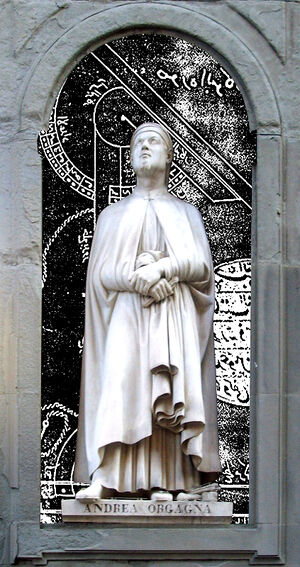Orcagna scrying engine: Difference between revisions
Jump to navigation
Jump to search
No edit summary |
No edit summary |
||
| Line 6: | Line 6: | ||
<gallery> | <gallery> | ||
File:Orcagna Uffizi.jpg|link=Orcagna (nonfiction)|September 16, 1839: Spokesman for the Uffizi scoffs at the notion of "[[scrying engines]]", declares that "[[Orcagna (nonfiction)|Andrea Orcagna]] is many things -- painter, sculptor, architect -- but he is not the sorcerer you describe" | File:Orcagna Uffizi.jpg|link=Orcagna (nonfiction)|September 16, 1839: Spokesman for the Uffizi scoffs at the notion of "[[scrying engines]]", declares that "[[Orcagna (nonfiction)|Andrea Orcagna]] is many things -- painter, sculptor, architect -- but he is not the sorcerer you describe." | ||
</gallery> | </gallery> | ||
Revision as of 17:44, 15 September 2018
The Orcagna scrying engine is a well-known scrying engine built into the statue of Andrea Orcagna at Uffizi in Florence.
On November 16, 1838, the Orcagna scrying engine, under contract to House of Malevecchio, downloaded Abū Sahl al-Qūhī's Perfect Compass protocol, translating the protocol into Italian for the first time. Malevecchio attempted to monopolize the protocol, but five years later the French announced Compas Parfait; within fifty years, all of Christendom had similar systems.
In the News
September 16, 1839: Spokesman for the Uffizi scoffs at the notion of "scrying engines", declares that "Andrea Orcagna is many things -- painter, sculptor, architect -- but he is not the sorcerer you describe."

